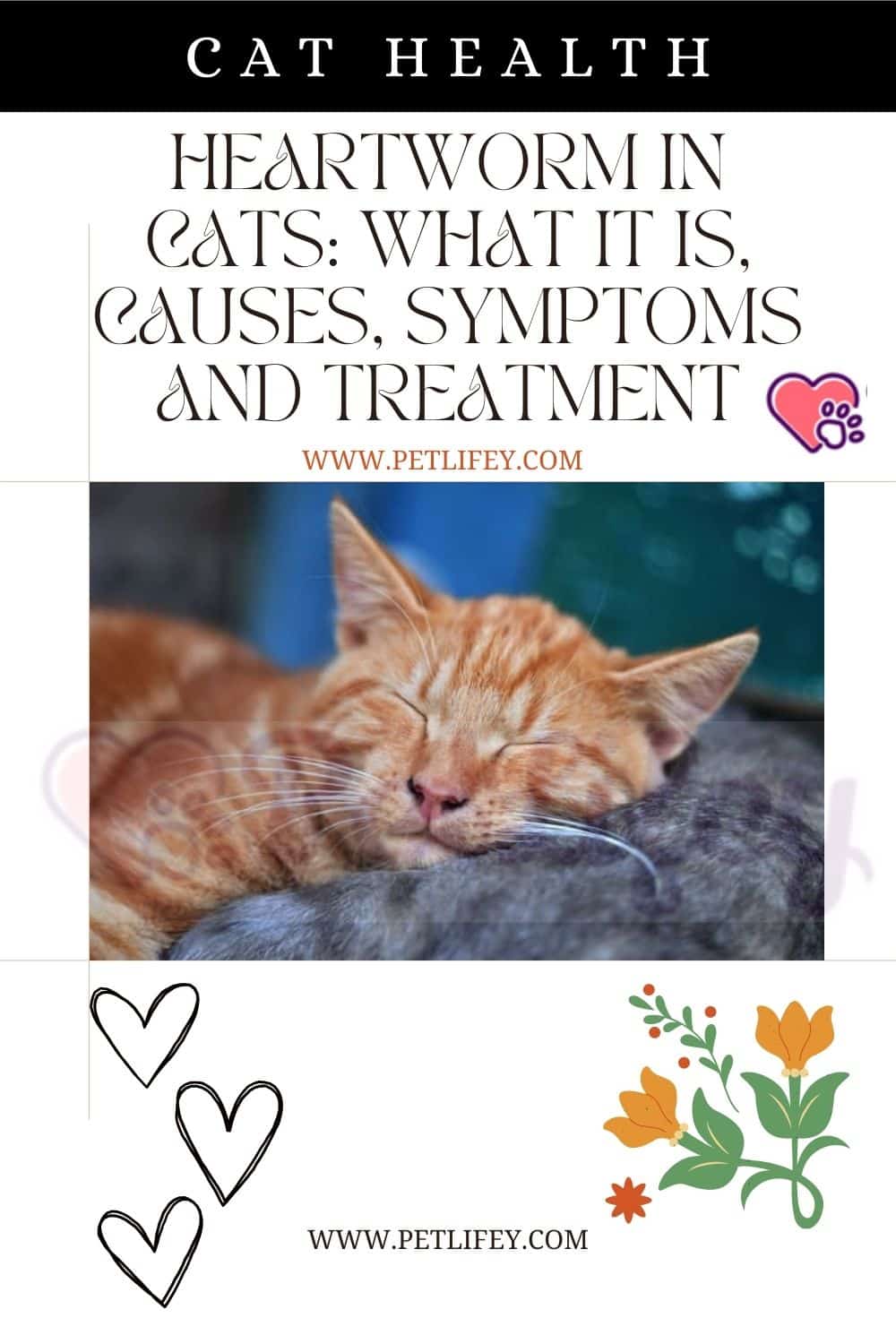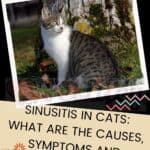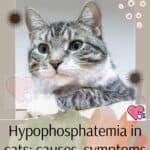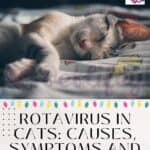Heartworm in Cats: Understanding Causes, Symptoms, and Treatment Options
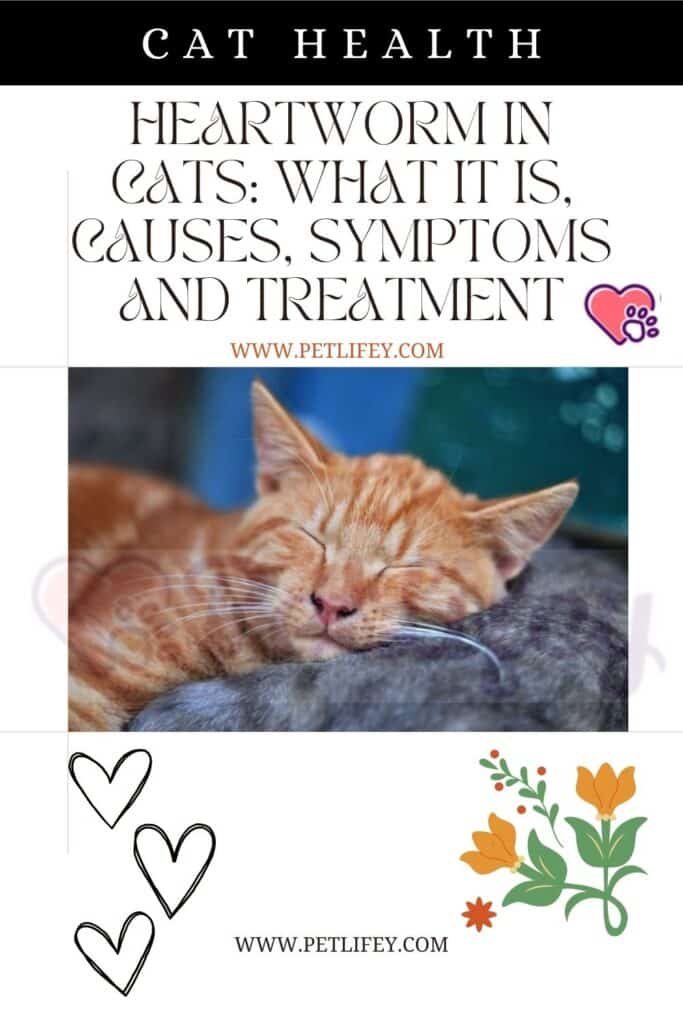
Heartworm in cats is a serious and potentially fatal condition caused by parasitic worms known as Dirofilaria immitis. Typically spread by the bite of an infected mosquito, these parasites find their way to the heart and lungs of your cat where they mature and reproduce. Unlike in dogs, heartworms don’t thrive as well within a cat’s body, which is why infestations are typically smaller and shorter-lived; however, even a few worms can cause severe health problems or even lead to sudden death.
The symptoms of heartworm in cats can often be subtle or mimicking other diseases, making it challenging to detect. Some common signs include coughing, rapid breathing, and vomiting which might sometimes contain blood. Your cat may also show signs of lethargy, weight loss, and reduced appetite. In severe cases, heartworm can lead to difficulty walking, fainting, and seizures. Since these symptoms can be mistaken for other conditions, it’s important for your cat to have regular veterinary checkups that include heartworm testing.
Treatment of heartworm in cats is complex and not without risk, primarily because the death of the worms can cause a severe inflammatory response in the cat’s body. No FDA-approved drug for heartworm treatment in cats is available, so your vet may recommend a treatment plan that focuses on managing symptoms and, in some cases, may involve surgical removal of the worms. The best strategy is prevention, which includes regular administration of heartworm preventive medications as prescribed by your veterinarian. Indoor cats are also at risk, so speak to your vet about the most appropriate preventive measures to keep your feline friend safe.
What is Heartworm in Cats
Heartworm disease is a serious condition in cats, caused by the worm parasite Dirofilaria immitis. This disease can lead to severe health complications for your cat if left untreated.
Understanding Heartworm Disease
Heartworm in cats is a condition where parasites reside within the heart and pulmonary arteries of an infected animal. Your cat can contract heartworm disease when bitten by an infected mosquito carrying heartworm larvae, known as microfilariae. These parasites are potentially fatal and can cause significant health issues even in small numbers.
The Life Cycle of Heartworm
When a mosquito carrying infective larvae bites your cat, the larvae enter the skin and eventually migrate to the heart and lungs where they can develop into adult heartworms. Mature heartworms in cats typically grow about 6 to 14 inches in length. It is important to note that not all larvae mature into adult heartworms in cats, as they are not the ideal host for these parasites.
Differences Between Feline and Canine Heartworm Disease
The disease manifests differently in cats than in dogs. A key difference is the number of adult heartworms present; cats usually have fewer worms — commonly just one to three — and may even have no adult worms at all. Male and female worms coexist, with females being larger in size. Since cats are not a natural host for heartworms, many of the worms do not survive to the adult stage, yet even immature worms can cause severe health issues in cats.
Causes of Heartworm in Cats
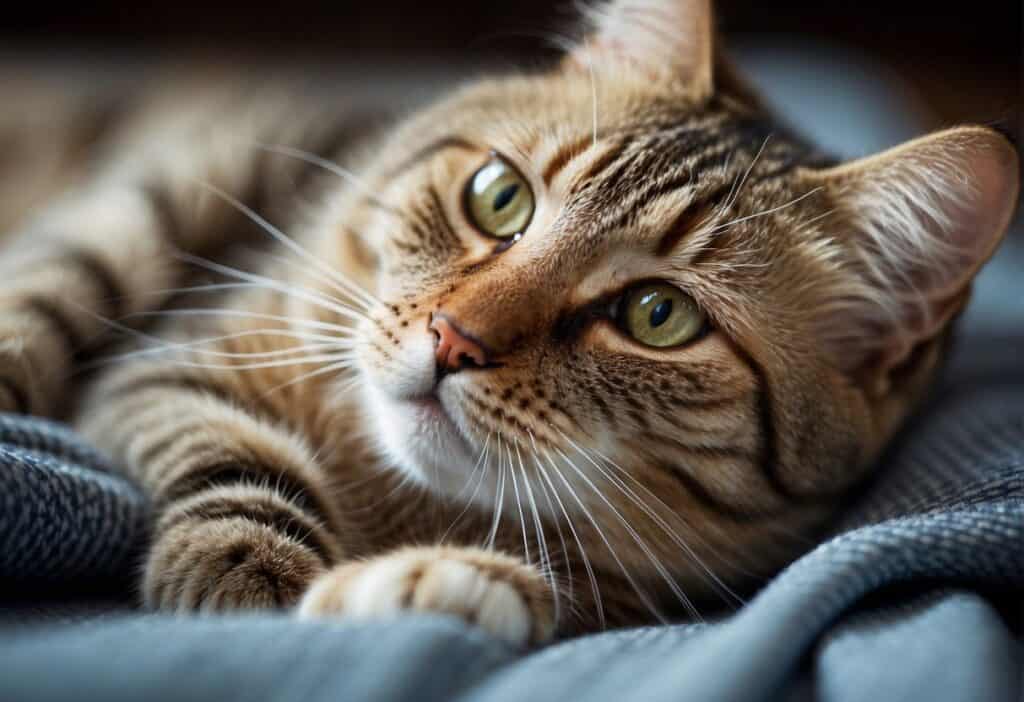
Heartworm in cats is primarily caused by the parasite Dirofilaria immitis, which is transmitted through mosquito bites. Understanding the vectors and risk factors associated with transmission can help in preventing this disease.
Transmission Vectors
Mosquitoes serve as the primary vector for heartworm disease. When a mosquito bites an infected animal, it picks up microfilariae, which are baby worms, and transmits them to other animals through bites. Despite common beliefs, your indoor cat is not completely safe; mosquitoes can easily enter homes and pose a risk to all cats.
- Mosquito Bite: The critical act that transmits the heartworm larvae from an infected host to your cat.
- Natural Hosts: While dogs are often natural hosts, heartworms can also thrive inside cats where they mature and reproduce.
Risk Factors for Cats
The risk of heartworm disease varies but both indoor and outdoor cats are susceptible. Factors that may increase a cat’s risk include:
- Location: Cats in warmer regions, especially in the southern United States, face a higher risk due to more favorable mosquito breeding conditions.
- Lifestyle: Outdoor cats are at a higher risk because of increased exposure to mosquitoes compared to indoor cats.
- Mosquito Population: The greater the number of mosquitoes, the higher the potential risk of transmission.
By being aware of the vectors and risk factors, you can better protect your cat from heartworm disease.
Symptoms of Heartworm Disease
Recognizing the symptoms of heartworm disease in your cat is critical for early detection and treatment. Be aware of various clinical signs that may indicate the presence of this condition, paying particular attention to respiratory symptoms and understanding the severe manifestations that can occur.
Clinical Signs in Cats
Weight Loss & Appetite: If your cat is losing weight or showing a decreased interest in food, these could be signs of heartworm disease. Lethargy: Exhibiting less energy and a general sense of malaise are common in cats affected by heartworms.
Respiratory Symptoms
Coughing & Wheezing: A persistent cough or wheezing can be mistaken for feline asthma but may actually be a sign of heartworm associated respiratory disease (HARD). Difficulty Breathing: Rapid and difficult breathing should be a significant cause for concern and an indicator to seek veterinary assistance.
Severe Heartworm Disease Manifestations
Severe Symptoms: Cats may experience vomiting, difficulty walking, fainting, seizures, or even sudden collapse. If you notice your cat exhibiting any of these symptoms, immediate veterinary care is imperative.
Diagnosing Heartworm in Cats
When you suspect your cat may have heartworm, a veterinarian will rely on various diagnostic tests to confirm the presence of the disease as there may not always be clear clinical signs.
Diagnostic Tests
- Blood Tests: These are usually the first step. The two main types of blood tests used are:
- Antigen test: This test detects specific heartworm proteins, called antigens, which are released by adult female heartworms into the cat’s bloodstream.
- Antibody test: This test checks for antibodies produced by your cat in response to heartworms, indicating exposure to the parasites.
- X-Rays: Chest x-rays can reveal changes in the heart and lungs that are suggestive of heartworm infection, such as enlarged arteries.
- Ultrasound: Sometimes referred to as an echocardiography, this test uses ultrasound waves to create images of your cat’s heart and can visualize adult worms.
Interpreting the Results
Interpreting the results of these tests is complex, as false negatives can occur in the case where there are only male worms or the infection is in its early stages. Antigen tests are generally considered more definitive, but a negative test does not entirely rule out heartworm, especially in the early stages of infection. X-rays and ultrasound findings can support the diagnosis by revealing physical changes in the heart and lungs due to the presence of heartworms. Your veterinarian may consider the results of multiple tests in conjunction with one another to provide an accurate diagnosis.
Heartworm Treatment Options
Heartworm disease in cats is complex, so your veterinary care team will discuss the best course of action based on your cat’s specific condition. There are medical treatments aimed at the heartworms themselves and supportive measures to assist with your cat’s symptoms.
Medical Treatments
When it comes to medical treatments for heartworm in cats, options are limited and significantly different from those for dogs. Melarsomine is the medication used in dogs to kill adult heartworms, but it is not approved for use in cats due to potential severe side effects. Instead, veterinarians may recommend a wait and see approach as many heartworms do not survive to adulthood in cats. If adult worms are present, minimizing the body’s reaction to the worms and supporting the cat’s health until the worms die naturally might be advised.
Occasionally, antibiotics and steroids like corticosteroids are used to control symptoms of heartworm associated respiratory disease (HARD). Since there is no approved adulticide treatment for heartworm in cats, these medications help manage inflammation and immune system reactions caused by the heartworms.
Supportive and Surgical Interventions
In cases where medical treatment is not sufficient to deal with the complications of heartworm disease, supportive and surgical interventions may become necessary. Cats in respiratory distress might require intravenous fluids, oxygen therapy, corticosteroids to reduce inflammation, and other supportive care.
In rare instances, if a cat has a high worm burden or when a cat is in critical condition, surgical removal of the heartworms may be considered. This is a high-risk procedure and typically reserved as a last resort.
Your veterinarian will carefully consider all available treatment options, and together you can determine the best and safest approach for managing heartworm disease in your cat.
Prevention and Management
Effective prevention and management of heartworm in cats can significantly increase your pet’s quality of life. Tailored preventive medications can be vital, and certain lifestyle adjustments can further reduce the risk of infection.
Preventive Medications
For the most reliable protection, you should administer heartworm preventative medication to your cats regularly. Products typically contain one of the following active ingredients:
- Ivermectin
- Selamectin
- Milbemycin Oxime
- Moxidectin
These are available as oral tablets, topical solutions, or injectable formulations. It is critical to follow your veterinarian’s instructions carefully, as dosages are specifically tailored to your cat’s weight and health status.
Indoor cats are not exempt from heartworm prevention. Mosquitoes, which are the vectors for heartworm disease, can also enter homes, putting indoor cats at risk.
Lifestyle and Environmental Changes
Reducing the chances of mosquito bites can help prevent the transmission of heartworm. Here are some environmental changes you can consider:
- Ensure window screens are intact to prevent mosquitoes from entering.
- Limit your cat’s outdoor exposure during peak mosquito hours, typically dusk and dawn.
Additionally, maintaining a heartworm-free environment for your cat also involves treating all pets in the household with heartworm preventatives to reduce the overall burden of disease.
The Impact of Heartworm Disease
When your cat contracts heartworm disease, the subsequent health complications can be severe and greatly reduce their quality of life. Understanding the prognosis is vital for managing expectations and treatment.
Health Complications
Heartworm disease leads to health complications primarily involving the heart and lungs. When heartworm larvae enter your cat’s body, they navigate towards the heart and pulmonary arteries. Here, they mature and often cause a significant inflammatory response. This inflammation can obstruct blood flow, leading to reduced oxygen supply and potential lung disease. In some cases, the inflammation and resulting damage can be fatal.
The immune response to the heartworms, especially to those that do not reach adulthood, is also problematic. Even immature worms can cause serious issues known as Heartworm Associated Respiratory Disease (HARD). HARD can mimic other respiratory conditions, which complicates diagnosis.
Symptoms associated with the health complications of heartworm disease in cats may include:
- Intermittent vomiting
- Diarrhea
- Respiratory distress—difficult and rapid breathing
- Coughing and gagging
- Loss of appetite
- Lethargy
- Weight loss
Prognosis for Feline Heartworm Disease
The prognosis for a cat with heartworm disease varies. If the infection is caught early and is mild, some cats can live relatively normal lives with careful monitoring and supportive care. However, if the infection is severe and significant heart or lung damage has occurred, the prognosis is much graver. Treatment options are limited for cats, as the medications used to treat heartworm infections in dogs are not safe for feline use. Preventive measures are, therefore, crucial for averting this disease.
Understanding Co-Inhabitants
Your awareness of heartworm’s impact on various species is crucial for managing the health of pets, especially cats. Heartworm disease does not confine itself to a single host species but can spread across various animals, affecting each in unique ways.
Heartworm in Other Species
Dogs: The primary host for heartworm is dogs. They are the natural hosts where heartworms can reach maturity, reproduce, and cause significant health issues.
Cats: In cats, heartworms do not typically survive to the adult stage. However, even immature worms can cause a condition known as Heartworm Associated Respiratory Disease (HARD).
Ferrets: Similar to cats, ferrets can be infected, showing signs akin to heartworm disease in dogs due to their close physiological similarities.
Wolves, Coyotes, and Foxes: Wild canids such as wolves, coyotes, and foxes can also harbor heartworms, serving as potential reservoirs of the disease in the environment.
Humans: While humans can be infected by the larvae, the heartworms usually do not survive to adulthood. Nonetheless, infected mosquitoes can transmit larvae to humans, leading to localized infections.
Select a species below to see its role in the heartworm lifecycle:
| Species | Role in Lifecycle |
|---|---|
| Dogs | Natural hosts where heartworms can mature and reproduce |
| Cats | Accidental hosts; heartworms can cause HARD even without reaching adulthood |
| Ferrets | Similar susceptibility to dogs |
| Wolves/Coyotes | Wild reservoirs contributing to the lifecycle |
| Foxes | Wild reservoirs that maintain the lifecycle in nature |
| Humans | Accidental hosts; unlikely to support full lifecycle |
Note that while prevention is the best strategy across all pets, the approach to treatment and management can vary depending on the species. Always consult with a veterinarian for species-specific guidance on heartworm disease.
Conclusion
In the fight against heartworm in cats, accurate information and proactive disease management play critical roles. Swift recognition of symptoms and timely treatment are key factors in ensuring better health outcomes.
Summary
Heartworm in cats is a serious condition induced by the parasitic worm Dirofilaria immitis, transmitted through mosquito bites. Symptoms can be subtle or non-specific and may include coughing, asthma-like attacks, intermittent vomiting, lethargy, loss of appetite, or sudden collapse. Treatment options are limited, highlighting the importance of prevention. The American Heartworm Society recommends yearly screenings and the use of preventive medications as the most reliable way to protect your cat from heartworm disease.
Role of Pet Owners in Disease Management
Your role as a pet owner is crucial in both the prevention and early detection of heartworm disease. You should be vigilant for any signs of illness and maintain regular veterinary care visits to ensure early intervention if needed. As per the American Heartworm Society, preventative measures, as prescribed by your veterinarian, are not just recommended; they are essential for safeguarding your feline’s health against this preventable yet potentially fatal condition.

